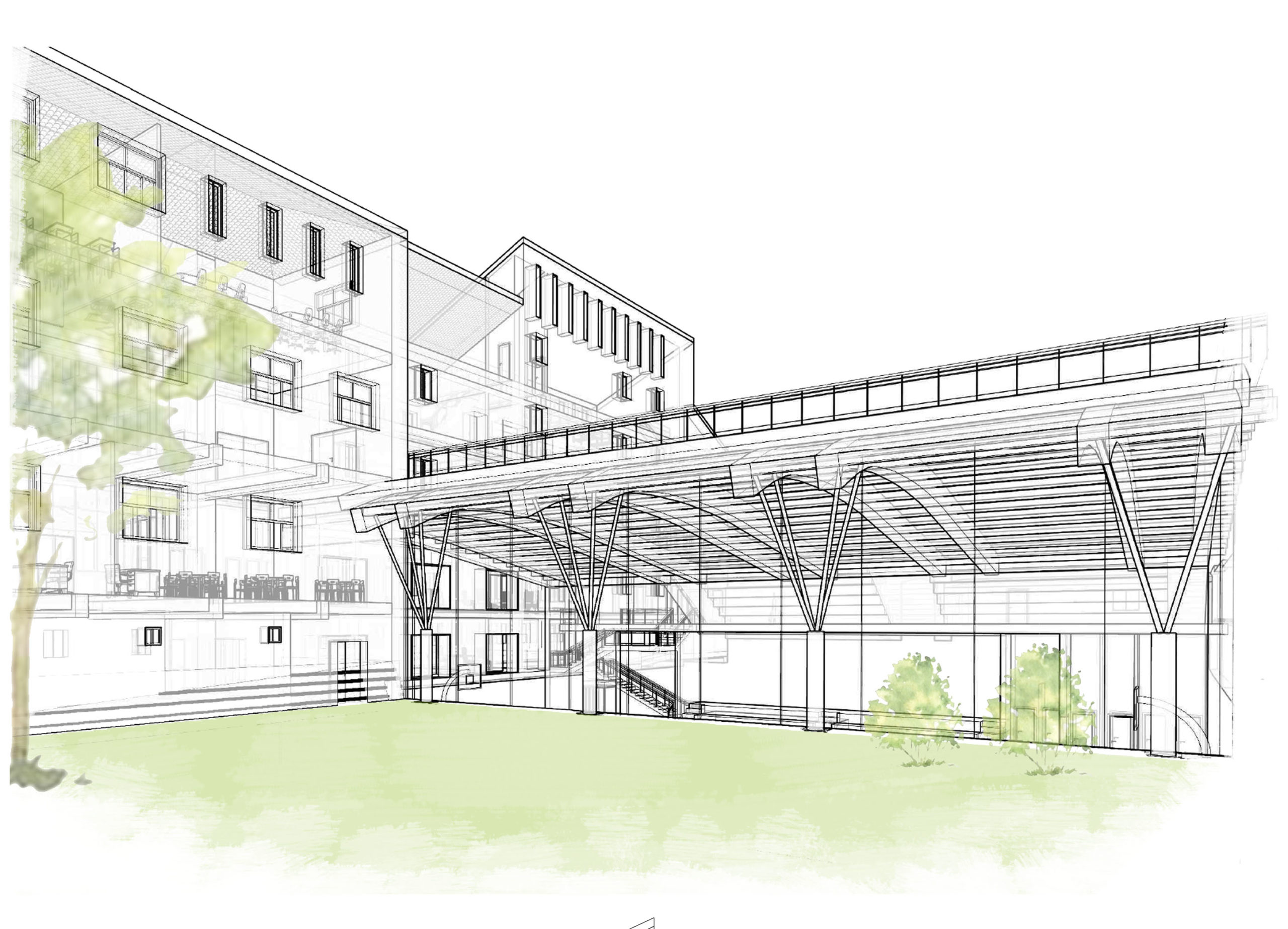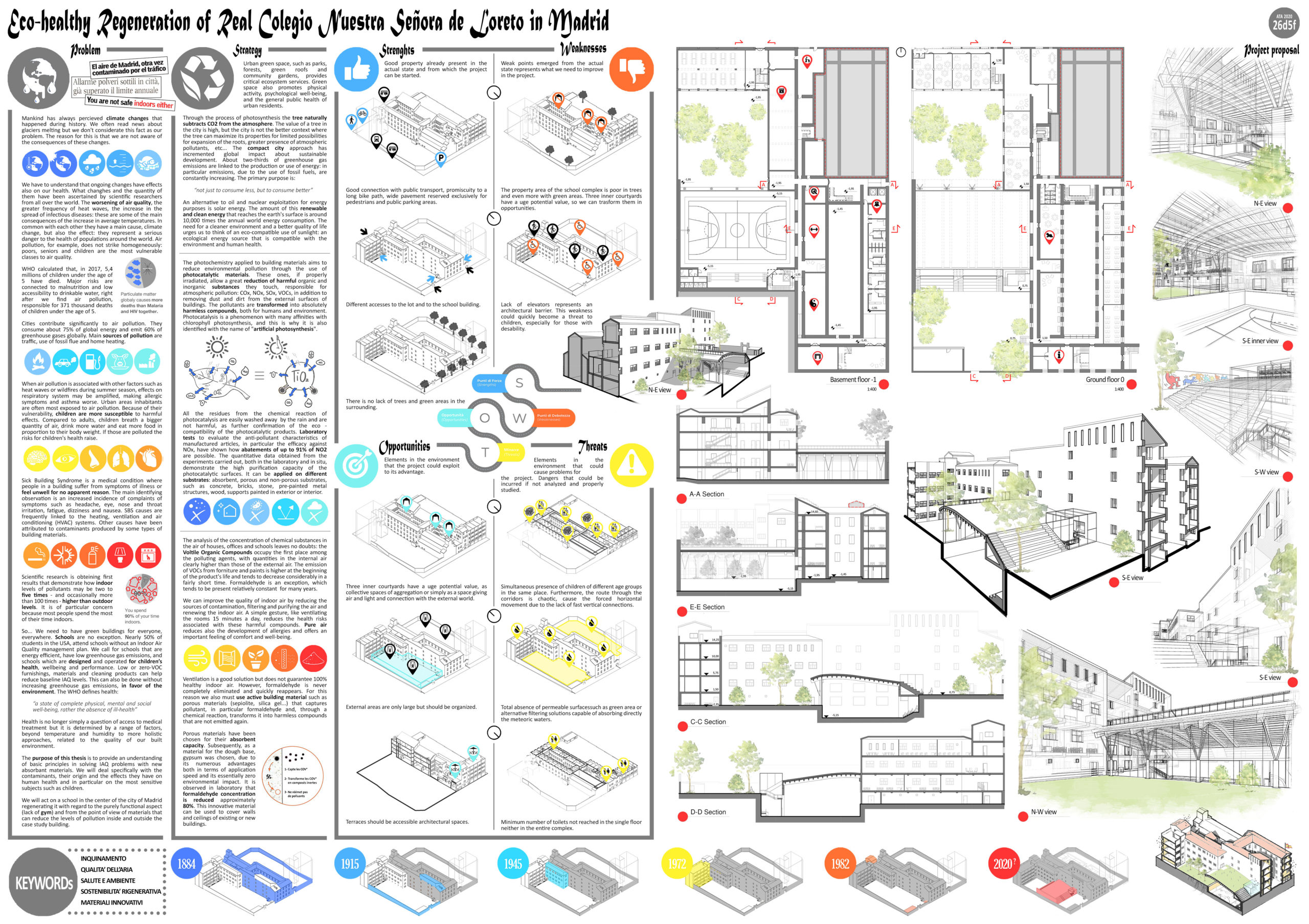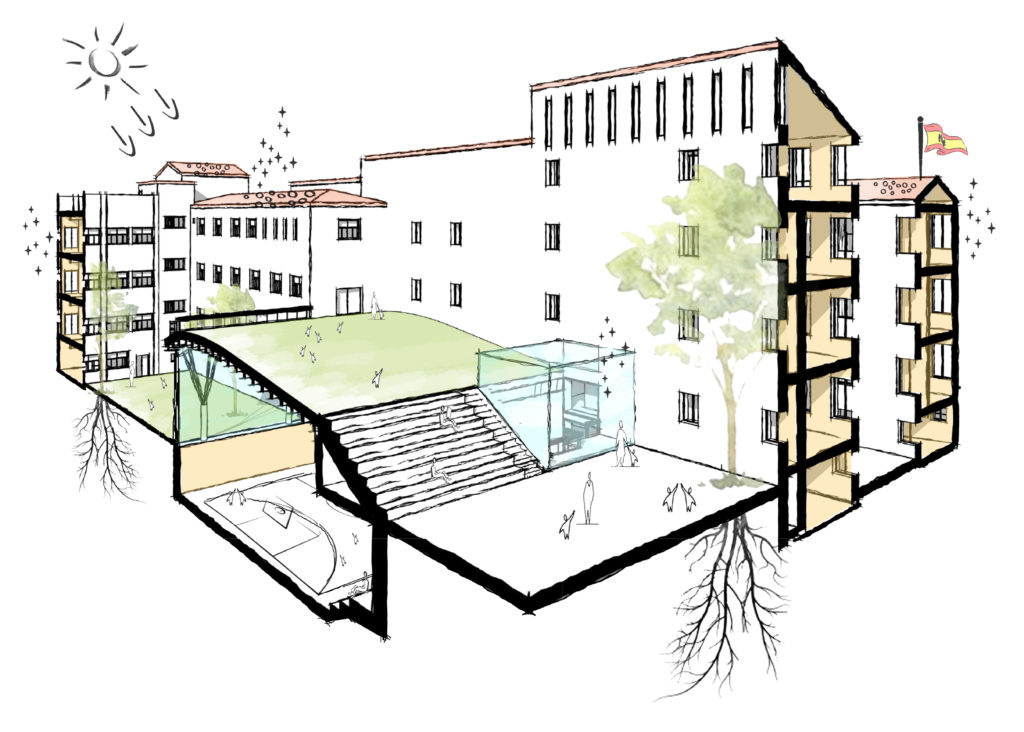As we all know, the well-being of man and of the environment that surrounds him are closely connected. We spend 90% of our time in a closed space such as home, school, job and free time: indoors where we think we are “protected” but where instead the air quality is much worse than outside. We subconsciously breathe high quantities of harmful particles, produced by most of the furniture and by the “inevitable” breathing. We can improve Indoor Air Quality by reducing the sources of contamination, purifying the air and periodically renewing it; or we can go straight to the principal source and act on the construction materials. Taking a school in Madrid as a case study, we are carrying on a functional and sustainable requalification project.

We need to have green buildings for everyone, everywhere. Schools are no exception. More than 25 million children, nearly 50% of students in the USA, attend schools without an Indoor Air Quality management plan. We call for schools that are energy efficient, have low greenhouse gas emissions, and schools which are designed and operated for children’s health, wellbeing and performance. Low or zero-VOC furnishings, materials and cleaning products can help reduce baseline IAQ levels. This can also be done without increasing greenhouse gas emissions, in favor of the environment.
The Board:






